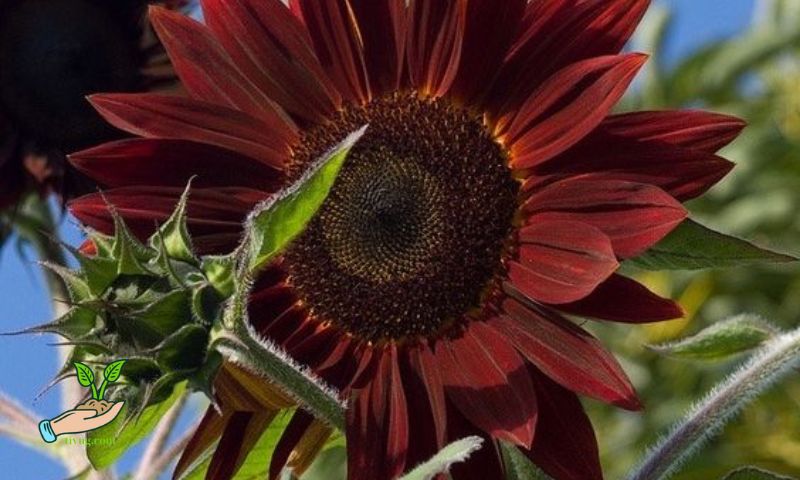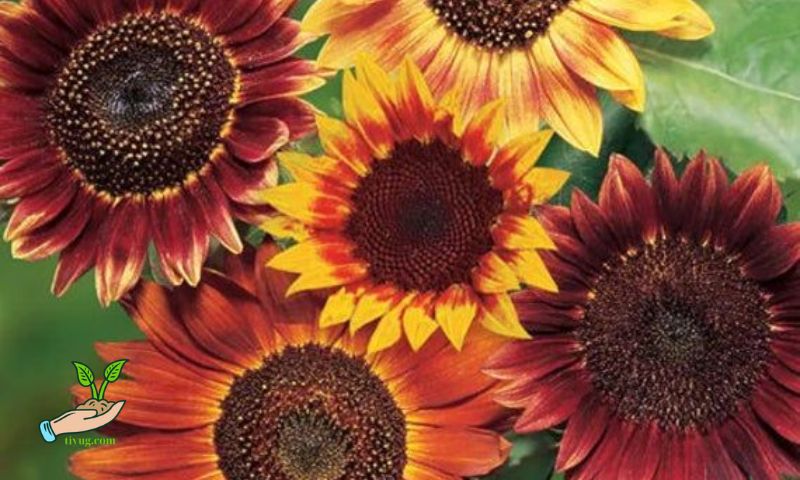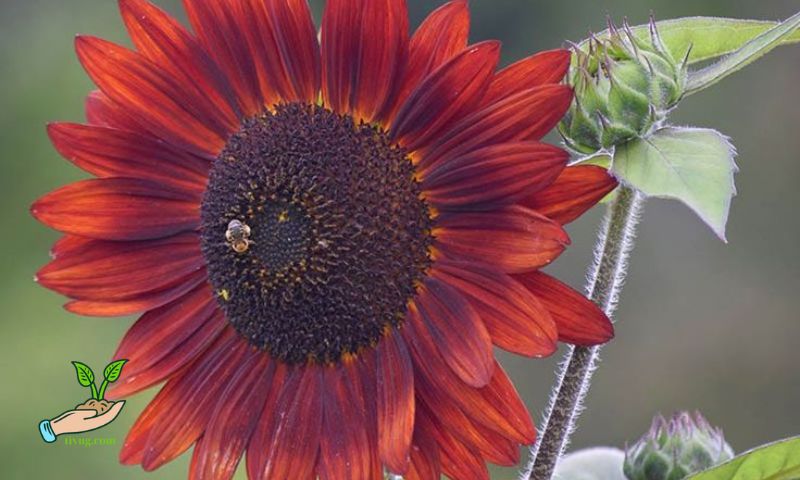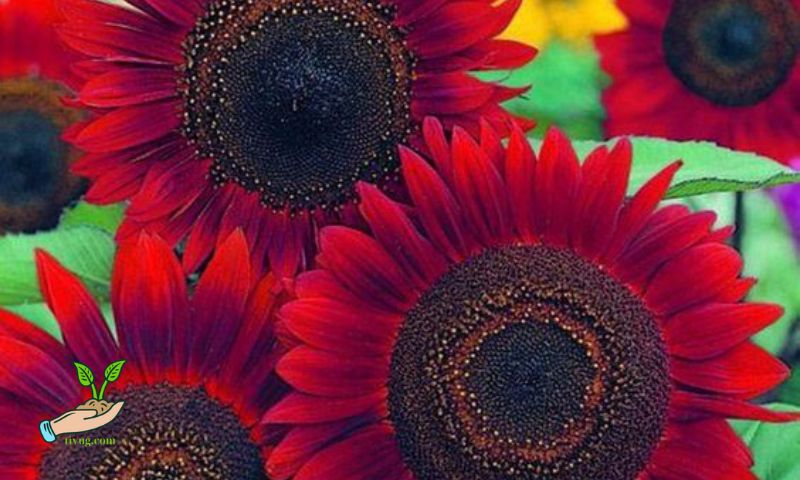Red sunflowers, with their striking crimson hues and bold presence, have captivated gardeners and floral enthusiasts alike. While traditional sunflowers are known for their cheerful yellow petals, red sunflowers offer a unique twist with their deep red blooms. In this comprehensive guide, we’ll explore the allure of red sunflowers, how to cultivate them, their varieties, and their various uses in landscaping and floral arrangements.
Benefits of Red Sunflowers

Red sunflowers stand out prominently in any garden or floral arrangement due to their distinctive color. Unlike the more common yellow sunflowers, red varieties add a sense of drama and sophistication. Their rich, deep hues make them excellent focal points in gardens, creating eye-catching displays that draw admiration from onlookers.
In addition to their aesthetic appeal, red sunflowers also attract pollinators such as bees and butterflies, contributing to a healthy ecosystem in your garden. Their sturdy stems and large blooms make them excellent cut flowers for floral arrangements, adding a touch of elegance to bouquets and centerpieces.
Cultivation and Growing Conditions
To cultivate red sunflowers successfully, it’s essential to provide them with the right growing conditions. These sunflowers thrive in full sun and well-drained soil. Ideally, plant them in an area that receives at least six to eight hours of sunlight daily. Prepare the soil by incorporating organic matter to improve drainage and fertility.
When embarking on the journey of planting red sunflowers, the timing and technique of sowing seeds directly into your garden bed are pivotal for a successful growth cycle. Begin by waiting until after the last frost date has passed before planting your seeds. This ensures that the soil temperature is optimal for germination and subsequent plant growth.
To plant the seeds, sow them about one inch deep into prepared soil. Ensure adequate spacing between seeds, typically ranging from 6 to 12 inches apart, depending on the expected size of the sunflower variety. This spacing allows each plant ample room to develop and prevents overcrowding, which can hinder their growth and overall health.
Maintaining soil moisture is crucial during the initial stages of growth. Keep the soil consistently moist until seedlings emerge, as this facilitates the germination process and supports early root establishment. Once seedlings have sprouted, transition to a watering routine that emphasizes deep, infrequent watering. This encourages the development of deep root systems, which are essential for sunflowers to withstand drought conditions and support robust growth.
Varieties of Red Sunflowers

There are several varieties of red sunflowers to choose from, each offering unique characteristics and benefits. One popular variety is the ‘Moulin Rouge,’ known for its large, dark red blooms that can reach up to 6 inches in diameter. Another favorite is the ‘Red Sun,’ which features bright crimson petals and a compact growth habit, making it ideal for smaller gardens or containers.
For those seeking a deeper shade of red, the ‘Velvet Queen’ variety is a top choice. Its velvety, wine-red petals and contrasting dark centers make it a stunning addition to any garden border or cutting garden. Whether you prefer a bold statement or a more subtle touch of red, there’s a red sunflower variety to suit every gardener’s preference.
Uses and Applications
Red sunflowers are versatile plants that lend themselves to various uses and applications. In landscaping, they serve as focal points in flower beds and borders, adding height and color contrast to garden designs. Plant them alongside complementary flowers such as white daisies or blue salvia for a striking color combination that enhances curb appeal.
Beyond landscaping, red sunflowers are prized for their use in floral arrangements and bouquets. Their long stems and large blooms make them ideal for creating dramatic centerpieces or adding a splash of color to floral displays. Combine red sunflowers with other seasonal blooms like dahlias and zinnias for a vibrant, garden-fresh arrangement that delights the senses.
Tips for Maintenance and Care

Maintaining healthy red sunflowers involves regular care and attention to ensure robust growth and abundant blooms. Here are some essential tips for caring for your red sunflowers throughout the growing season:
- Watering: Water deeply but infrequently to encourage deep root growth. Aim to keep the soil evenly moist, especially during hot, dry periods.
- Fertilization: Apply a balanced fertilizer once a month during the growing season to promote healthy foliage and flower production.
- Deadheading: Remove spent blooms promptly to encourage continuous flowering and prevent seed formation, which can divert energy from new blooms.
- Pest and Disease Control: Monitor plants regularly for signs of pests such as aphids or diseases such as powdery mildew. Treat infestations promptly with organic insecticidal soap or fungicides as needed.
By following these maintenance tips, you can enjoy robust, healthy red sunflowers throughout the growing season, enhancing the beauty of your garden with their vibrant blooms.
Conclusion
In conclusion, red sunflowers offer a captivating alternative to traditional yellow varieties, adding depth and drama to any garden or floral arrangement. From their striking color to their versatility in landscaping and floral design, red sunflowers are sure to leave a lasting impression. Whether you’re a seasoned gardener or new to planting flowers, consider adding these stunning blooms to your outdoor space for a touch of vibrant elegance.

